HM Coastguard celebrates 200th anniversary of saving lives at sea
and live on Freeview channel 276
On Saturday (January 15), coastguards across all four home nations cast throwlines as a symbol of the service’s dedication – past and present.
Throwlines, which form part of the lifesaving kit used by coastguard teams, were cast into the seas around Scotland, England, Wales and Northern Ireland.
Advertisement
Hide AdAdvertisement
Hide AdThe Coastguard team at Morecambe took part in the casting of the throwline event marking the 200th anniversary.
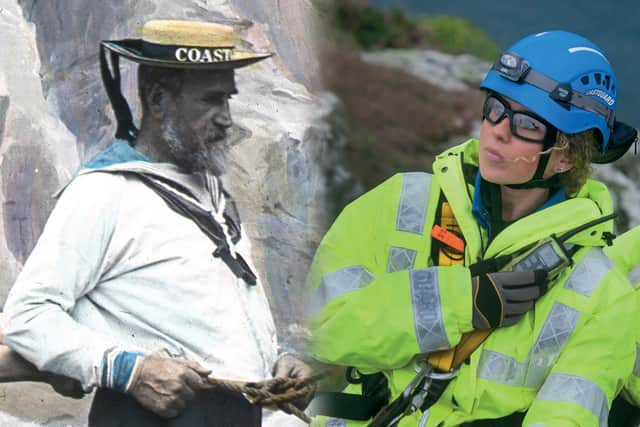

Paul DeRome, community safety officer, Morecambe Coastguard team, said: “The first coastguard station at Morecambe was at Fylde Court, Morecambe, the team then moved from Fleetwood to Morecambe in May 1861.
“The very first station officer was Capt Septimus Cowell who lived on Lord Street, Morecambe. What is interesting is the first station officer in 1861 was Cpt S Cowell and our current station officer is Shaun Cowell, there is no relation.
“Another name for coastguard is ‘tide waiter’.
“A reference to coastguard in 1912 has been made in Roger K Bingham’s book ‘Lost Resort the flow and ebb of Morecambe’ on page 33: ‘It has been suggested that Bare in Morecambe comes from instructions from oversands travellers, they stayed until the tide had receded and were notified of this by the coastguard coming and calling out ‘it’s bare, it’s bare’ meaning that the tide had gone back and the sands were bare’.
Advertisement
Hide AdAdvertisement
Hide Ad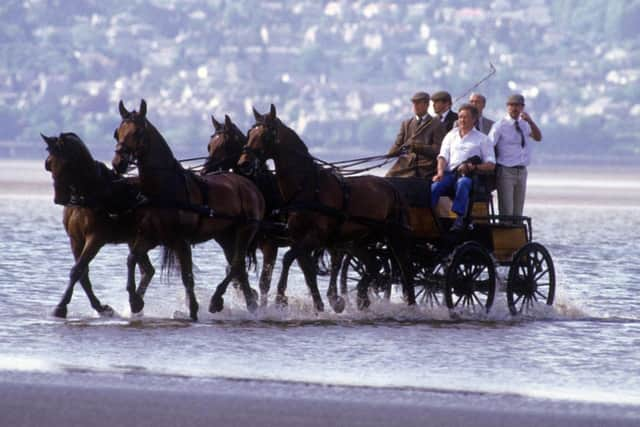

“The casting of the throwline event took place on Saturday, January 15, at 11am on the RNLI Hovercraft slipway. Teams around the UK all threw a line in the water at the same time. One of the biggest incidents Morecambe team took part in with the local RNLI crews was the Morecambe Bay cockling disaster on February 5, 2004.
“Our station officer at the time, John Bradbury, received an MBE at Buckingham palace after this major incident.
“On a happier note, he was also on the carriage when HRH Prince Phillip came to Morecambe in 1985 and crossed the bay in a horse-drawn carriage.
“Also present was the late Queen’s Guide to the Sands Cedric Robinson and special branch officers.
Advertisement
Hide AdAdvertisement
Hide Ad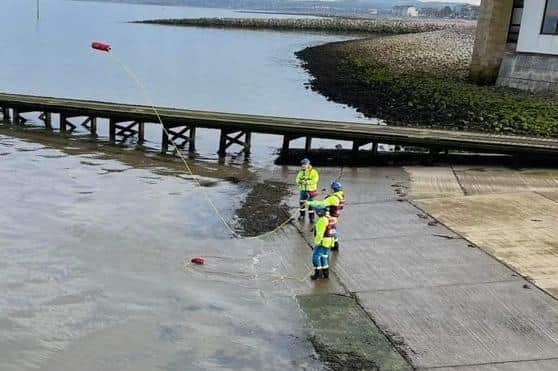

“John Bradbury has since retired and lives in Knott End. He still teaches at the Nautical College at Fleetwood.
“He was also one of the incident commanders when the Riverdance (ship) ran aground in Blackpool on January 31, 2008.
“Another milestone in our team’s history was in June 2018 when we were tasked to help with the wildfires on Winter Hill. This was a unique task being so far inland. Our mud rescue lances helped to penetrate the ground with water which helped to stop reigniting.
“The team also received an award for this incident from Lancashire Fire and Rescue service HQ.
Advertisement
Hide AdAdvertisement
Hide Ad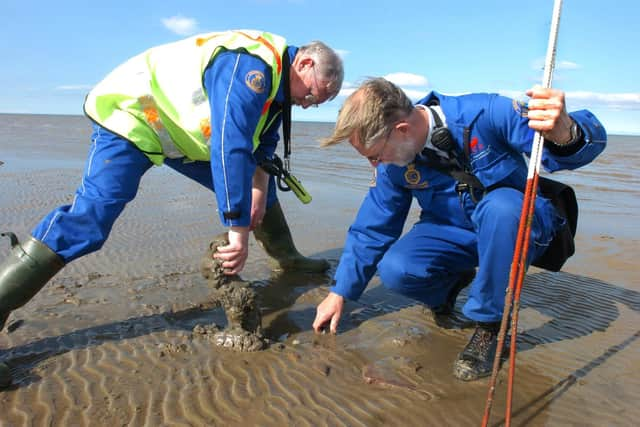

“Last year we moved into a new station at California Close, Heaton-with-Oxcliffe, due to our old office at the town hall being turned into an NHS Covid Centre.
“On January 1 this year we appointed Shaun Cowell the new station officer. So in 2022, we have a new station and a new station officer.”
Claire Hughes, director of HM Coastguard, said: “When you look at how we started and where we are now, it’s easy to celebrate the innovation and development that can be seen throughout the service.
“And yet, we are far more proud of the people, the volunteers and the staff who throughout two centuries have continued to strive to keep people safe at the coast and out at sea. We always have and always will respond to those in distress.
Advertisement
Hide AdAdvertisement
Hide Ad“While this milestone is an opportunity for us to look back with pride on what we’ve achieved, we have always looked to the future, and I’m proud that we continue to look for ways in which to improve and save lives. I’m proud of the commitment, the dedication and selfless sacrifice and I’m proud of how the service has developed and continues to do so.”
The national HM Coastguard was established in 1822. In 1809 the Preventive Water Guard was established, which may be regarded as the immediate ancestor of HM Coastguard. Its primary objective was to prevent smuggling, but it was also responsible for giving assistance to shipwrecks.
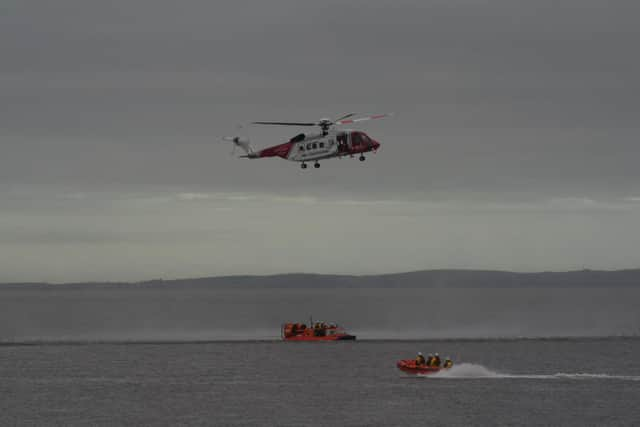

In 1821 a committee of inquiry recommended that responsibility for the Preventive Water Guard should be transferred from HM Treasury to the Board of Customs.
The Board of Custom and the Board of Excise each had their own long-established preventive forces: shore-based Riding Officers and sea-going Revenue Cruisers.
Advertisement
Hide AdAdvertisement
Hide AdThe committee recommended the consolidation of these various related services.
The Treasury agreed, and in a minute dated January 15, 1822, directed that they be placed under the authority of the Board of Customs and named the Coast Guard.
The new Coast Guard inherited a number of shore stations and watch houses from its predecessor bodies, as well as several coastal vessels, and these provided bases for its operations over the following years.
In 1829 the first Coast Guard instructions were published, dealing mainly with discipline and the prevention of smuggling; they also stipulated that when a wreck took place the Coast Guard was responsible for taking all possible action to save lives, taking charge of the vessel and protecting property.
Advertisement
Hide AdAdvertisement
Hide AdIn 1831, the Coast Guard took over duties from the Coast Blockade for the Suppression of Smuggling (which had been run by the Admiralty from a string of Martello Towers on the Kent and Sussex coast); this finally gave it authority over the whole of the UK coastline.
In the 1850s, with smuggling on the wane, oversight of the Coast Guard was transferred from the Board of Customs to the Admiralty.
In the decades that followed, the Coast Guard (or Coastguard, as it came to be called) began to function more like an auxiliary naval service, a recruitment ground for future naval personnel.
Responsibilities for revenue protection were retained, but hands-on rescue services began to be undertaken more and more by Volunteer Life Brigades and by the lifeboats of the RNLI, with the Coast Guard acting in a support role.
Advertisement
Hide AdAdvertisement
Hide AdBy the start of the 20th century, there was a growing sense of dissatisfaction with the service expressed both by the Board of Customs (concerned for revenue protection) and by the Board of Trade (responsible for safety at sea).
In the wake of WWI, moves were made to address these deficiencies.
In 1923 the Coastguard was re-established as a coastal safety and rescue service, overseen by the Board of Trade.
There was also a renewed determination to recruit, train and co-ordinate volunteer rescue personnel with the establishment in 1931 of a Coastal Life-saving Corps, later renamed the Coastguard Auxiliary Service.
Advertisement
Hide AdAdvertisement
Hide AdFor the rest of the 20th century, the Coastguard continued to operate primarily out of local shore stations (use of ships had declined after 1923).
In 1931 in England there were 193 stations and 339 auxiliary stations; in 1974 there were still 127 stations (permanently manned) and 245 auxiliary stations.
From the 1960s onwards, though, priorities were changing from maintaining coastal lookouts to provision of co-ordinated search and rescue services.
Old watch houses, with their on-site accommodation and annexed boathouses, gave way to new technology-based Maritime Rescue Co-ordination Centres, far fewer in number.
Advertisement
Hide AdAdvertisement
Hide AdEfficiency drives in the 1990s made Her Majesty’s Coastguard a government executive agency, then in 1998 the Marine Safety Agency and the Coastguard Agency were joined to become the Maritime and Coastguard Agency (MCA).
The Coastguard Rescue Service is made up of 352 teams located near the coast in stations around the UK, with the most coastal rescue stations in the UK.
The teams are made up of Coastguard Rescue Officers (CROs) who are volunteers trained to carry out rescues and provide assistance to those in distress on the UK’s coastline.
There are approximately 3,500 CROs and they carry out rope rescue, mud rescue, water rescue and search duties in all weathers and at all times. The teams are paged by the National Maritime Operations Centre (NMOC) or Coastguard Operations Centres (CGOC) and respond to emergencies.
Advertisement
Hide AdAdvertisement
Hide AdThey also assist other authorities such as the police, fire and ambulance with their specialist expertise.
The Coastguard Rescue Teams (CRT) will also provide safety advice to those they rescue and members of the public.
After recovering any casualty the CRTs will provide the assistance needed, then will transfer them to a place of safety.
The teams will also provide support to the lifeboats and SAR helicopters per tasking by the Operations Centres.
Advertisement
Hide AdAdvertisement
Hide AdThe Coastguard Rescue teams carry out searches of the shoreline in their patch which, depending on the team’s location, could be urban or remote cliff.
The searches could be for vessels, wreckage, people who have abandoned ship, or missing persons.
This is referred to as Lost and Missing Persons Search (L&MPS).
Due to the nature of the work carried out by CROs they are trained to be safe when in or near the water. They are trained to be able to carry out rescues in extremely rough conditions and the team will work together to recover the casualty from danger while ensuring that each team member is safe. The training the CRT have will depend on the location of the CRT.
Advertisement
Hide AdAdvertisement
Hide AdAll teams are trained in land search methods, water rescue and first aid.
Mud rescue which is particularly pertinent in Morecambe Bay, is described as the most physically demanding type of rescue there is.
Mud rescue technicians walk on the mud using equipment to prevent them from getting stuck, and recover casualties. In most cases, these are people who have become too tired to continue walking on the mud while taking a shortcut.
The CRTs also have rescue equipment to extract people deeply stuck in mud, including inflatable rescue walkways, mud lances, and specialist footwear inspired by ducks’ feet.
Advertisement
Hide AdAdvertisement
Hide AdRope rescue methods are to recover casualties who have fallen or are stuck on cliffs or difficult to reach areas, be they rural or
urban.
The teams work together to lower a rope rescue technician who will assess the casualty, provide first aid treatment if necessary and then recover the casualty to safety, before transferring the casualty to the next level of care as required.
In 2022, Coastguard Operations Centres will coordinate responses to emergency situations at the coast calling on 310 Coastguard Rescue Teams – made up of 3,500 dedicated volunteers – and using 10 search and rescue helicopter bases.
From its beginnings with coastal lookouts to today’s hi-tech national network of coordination centres, from small localised beginnings to international players – one thing has stayed the same for two centuries – Her Majesty’s Coastguard seeks to search, to rescue and to save.